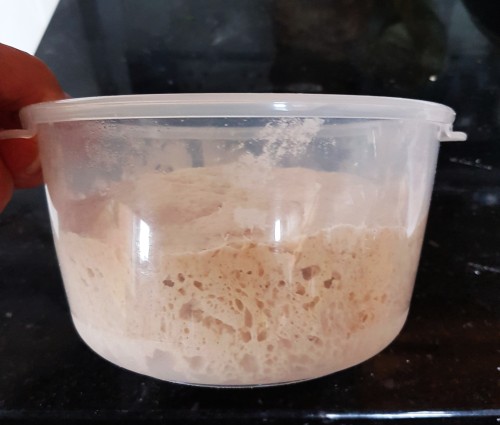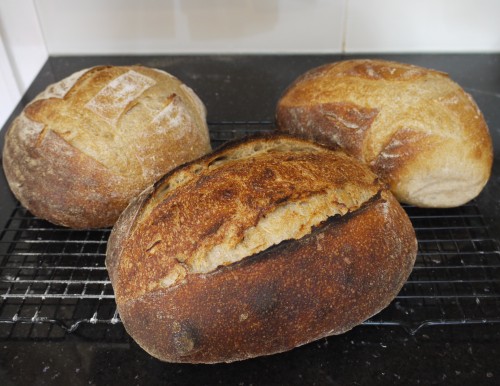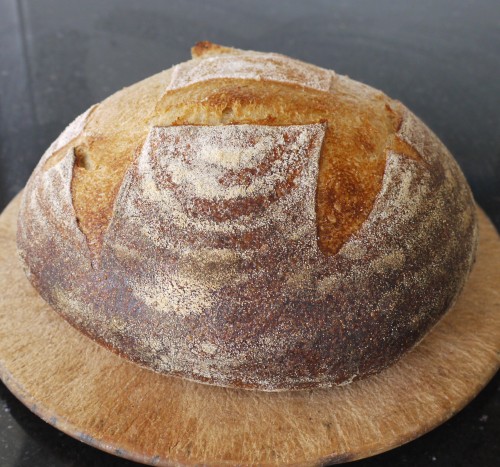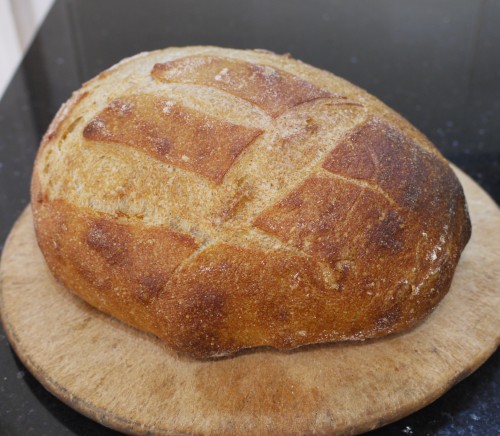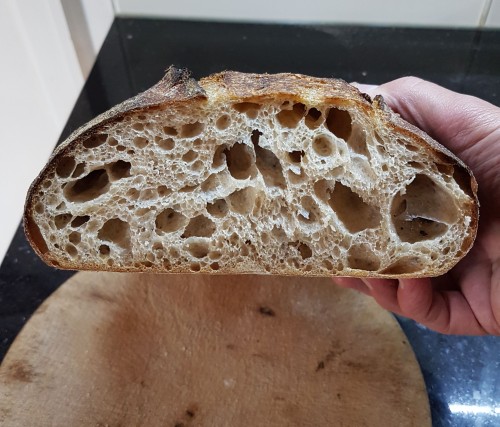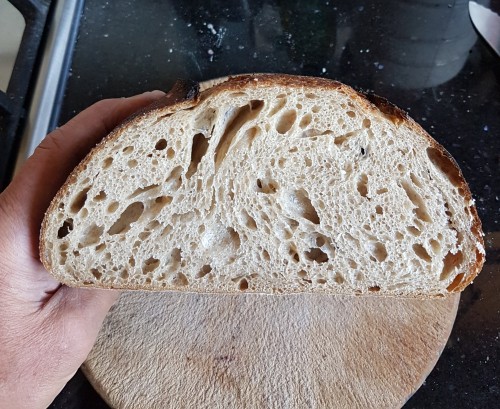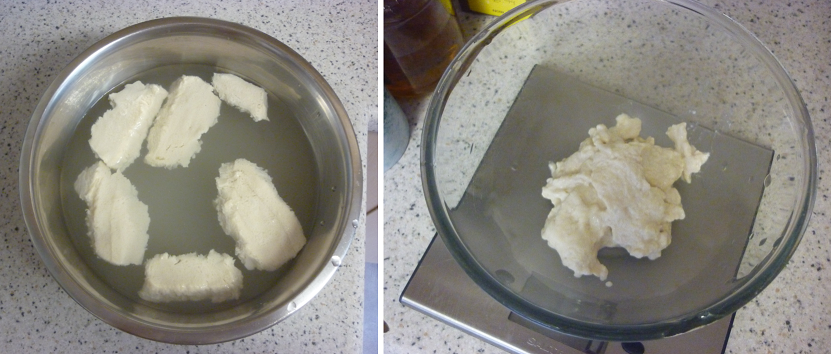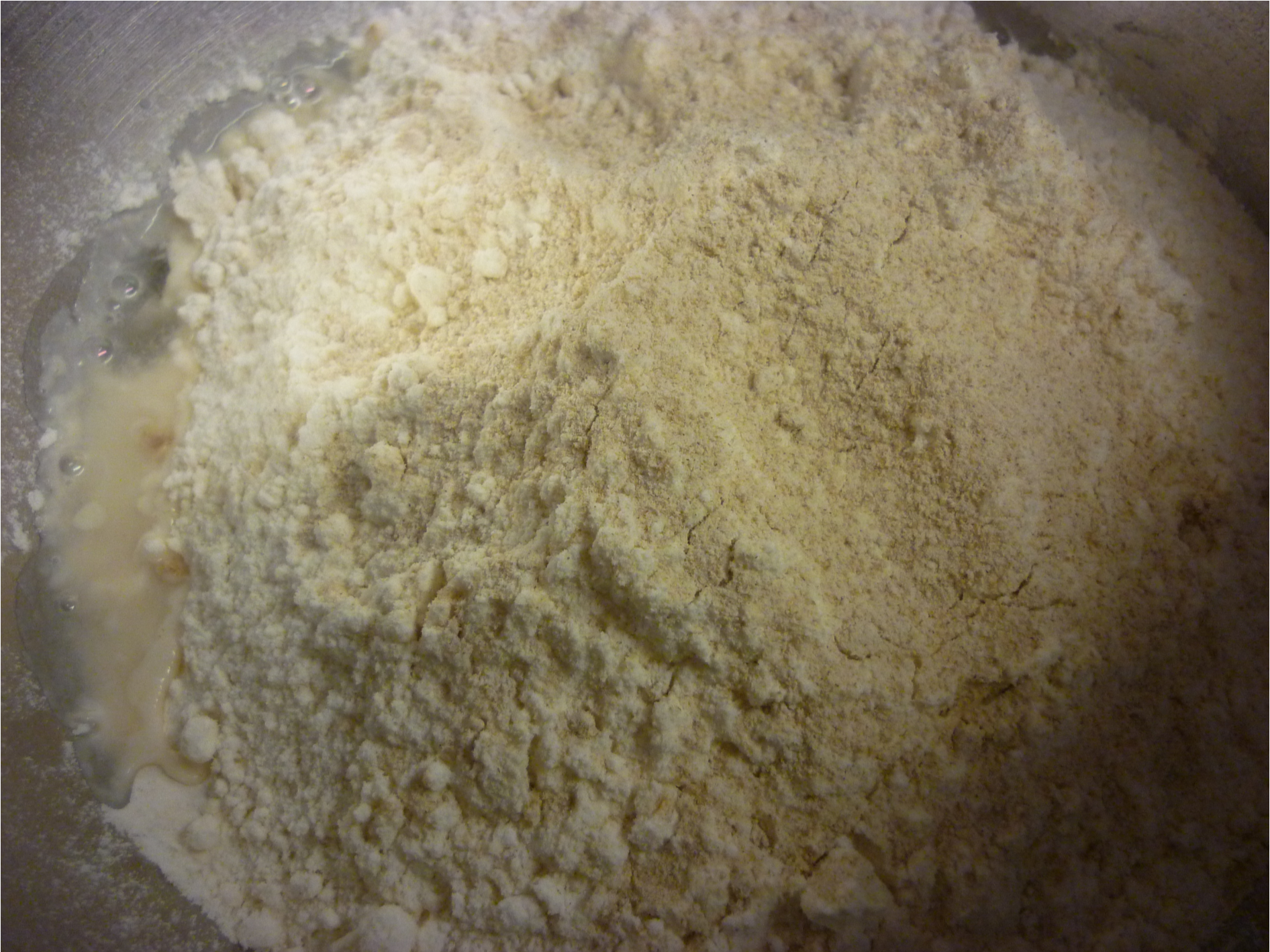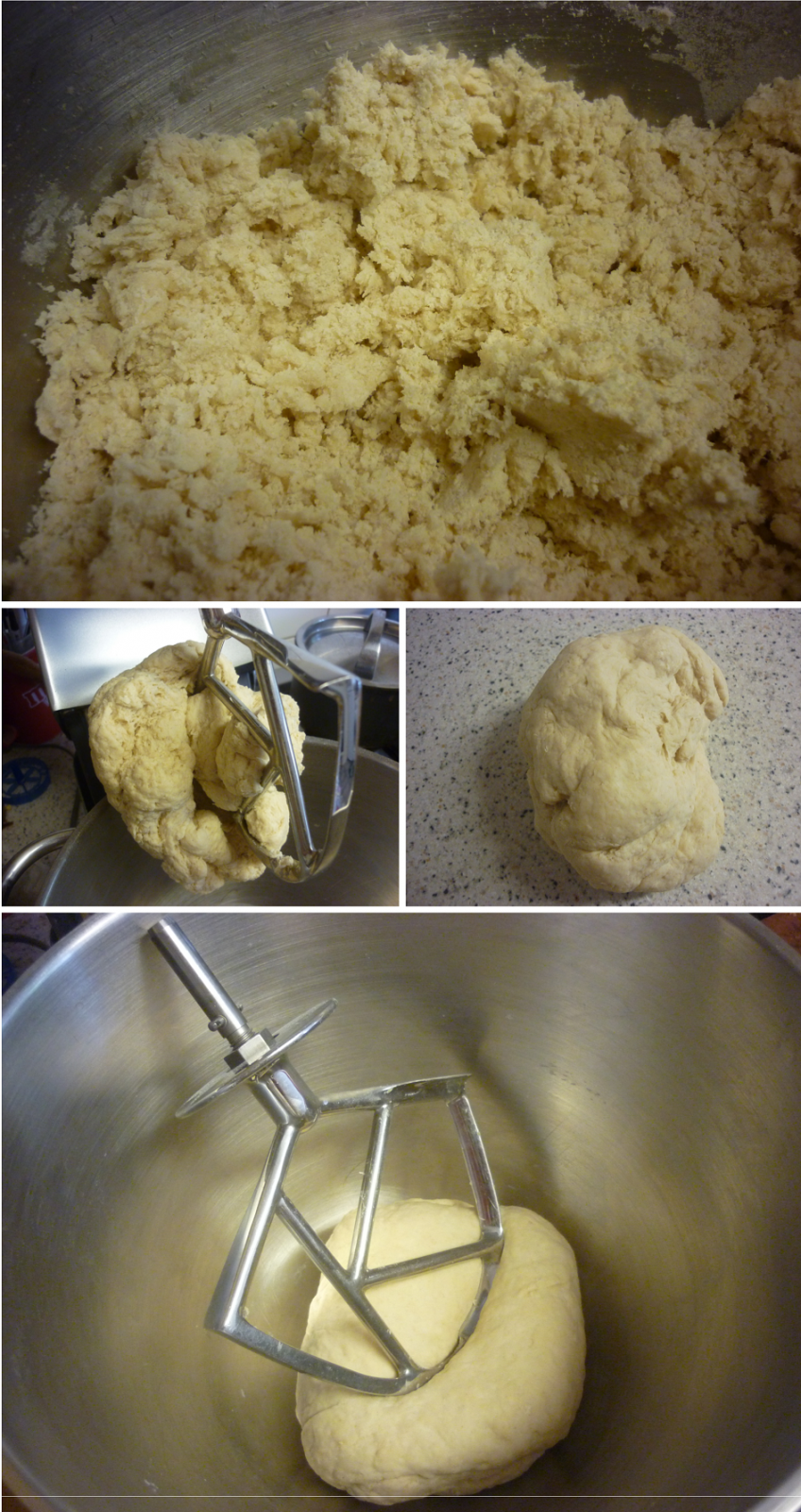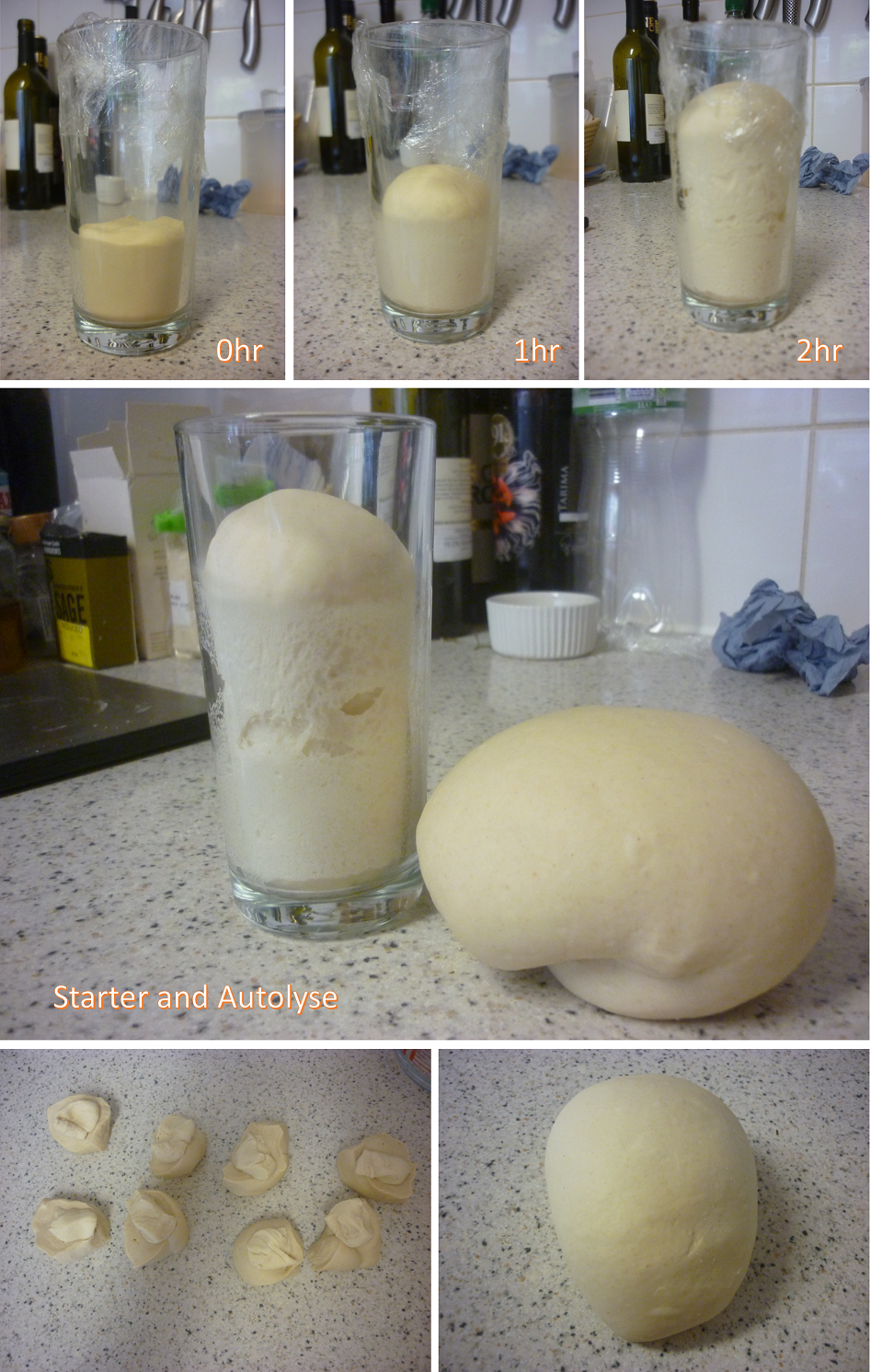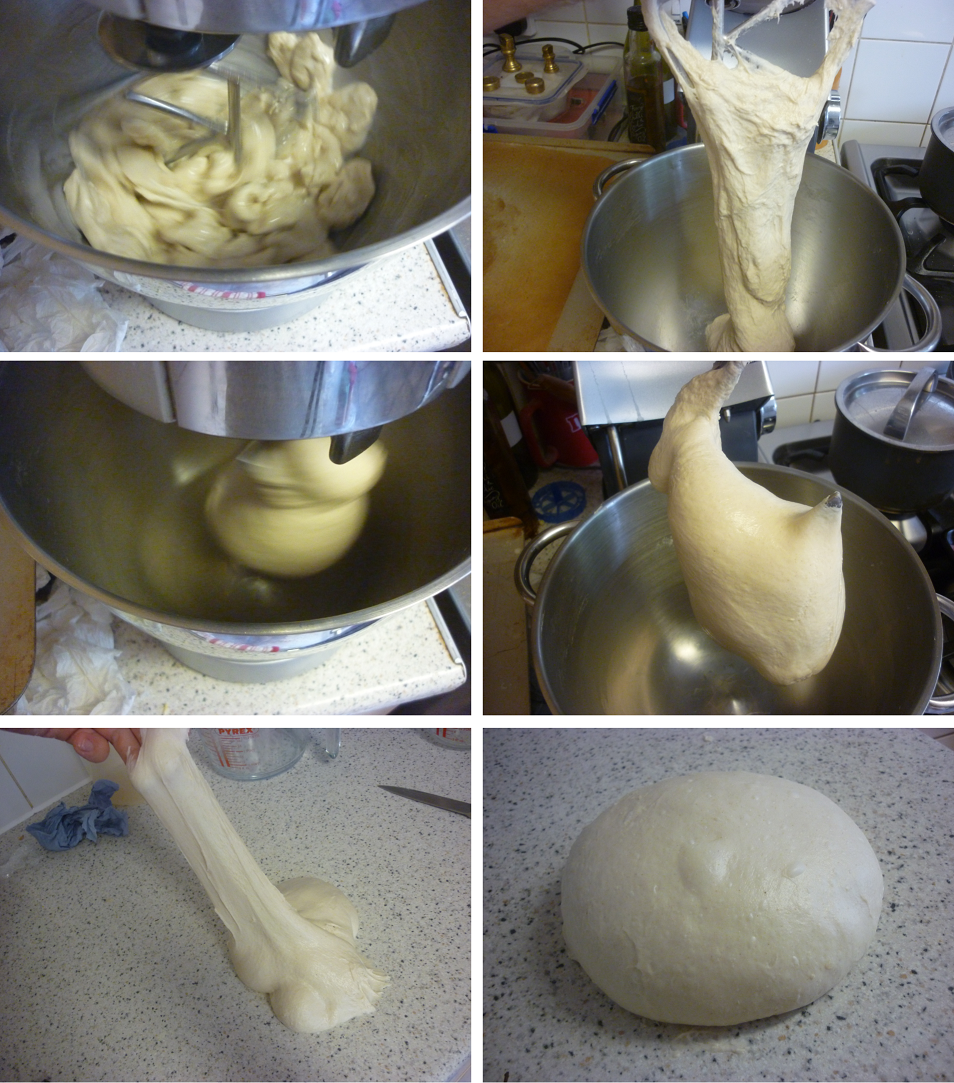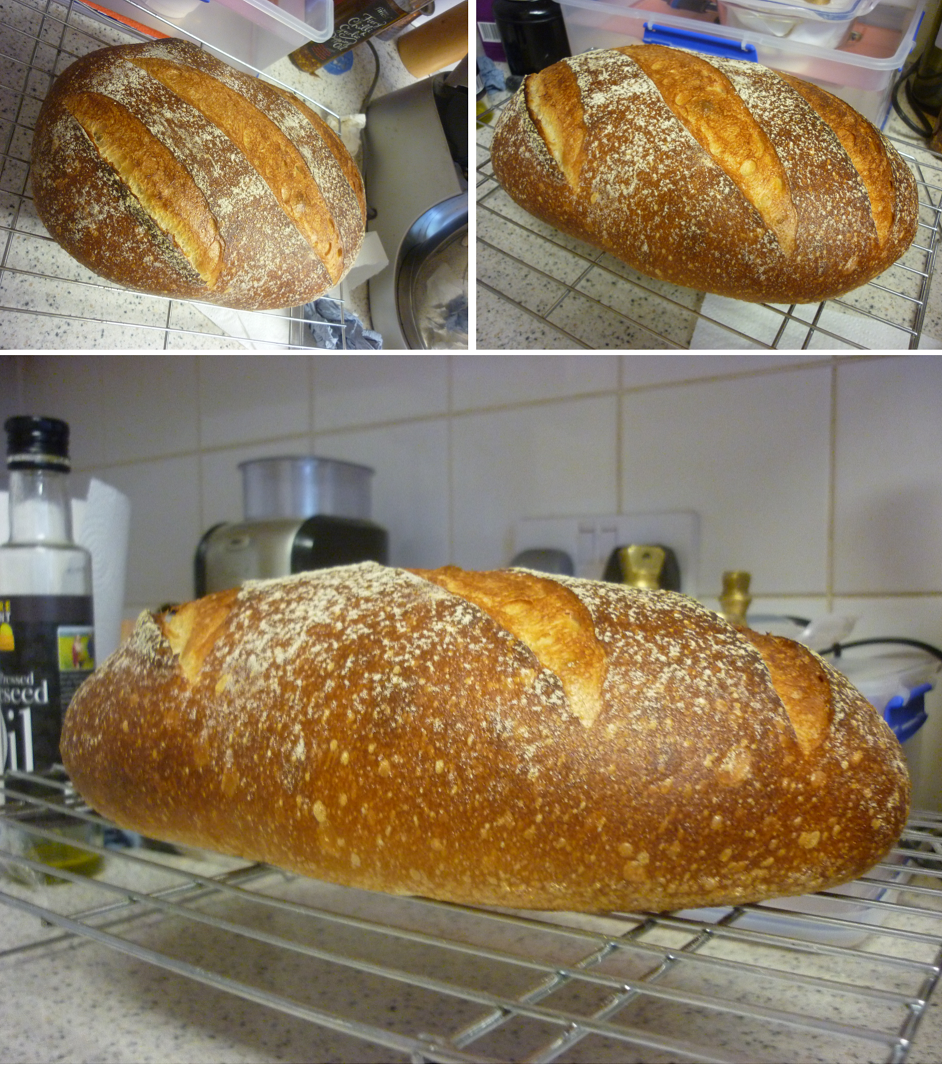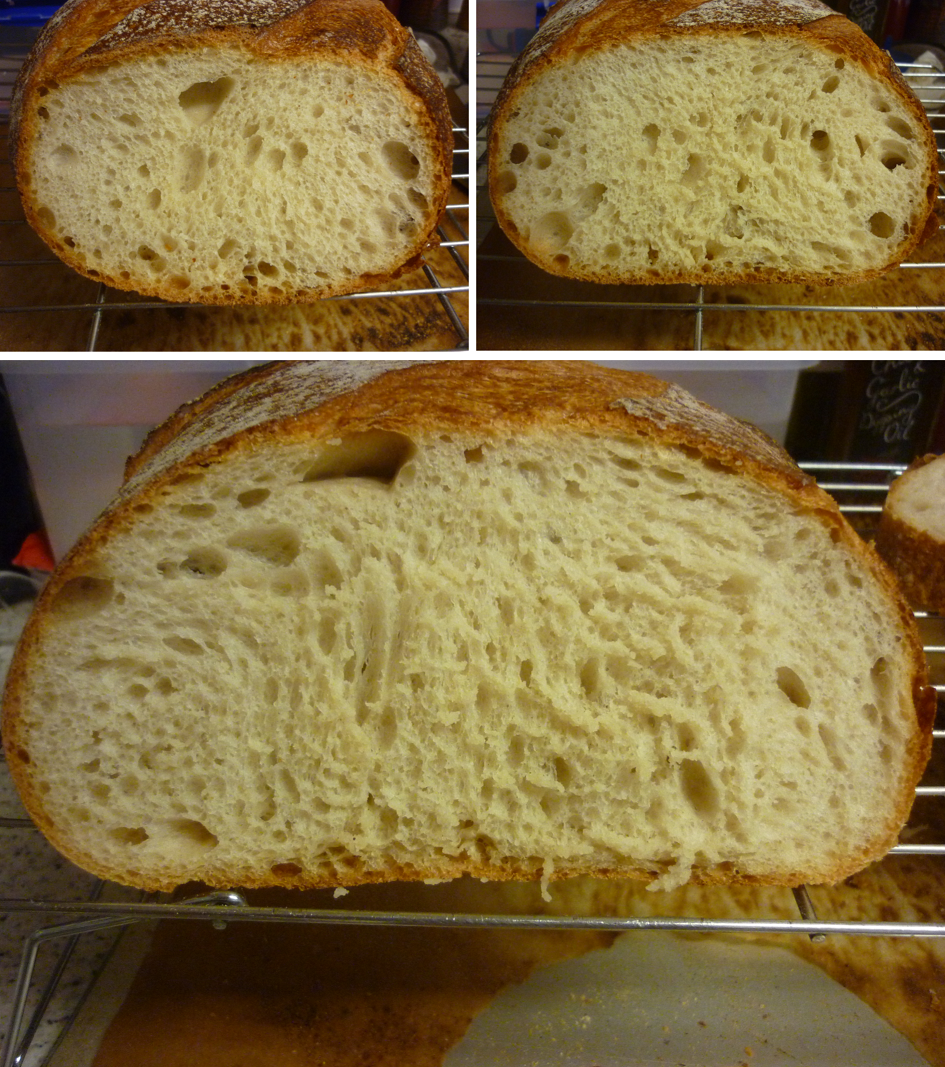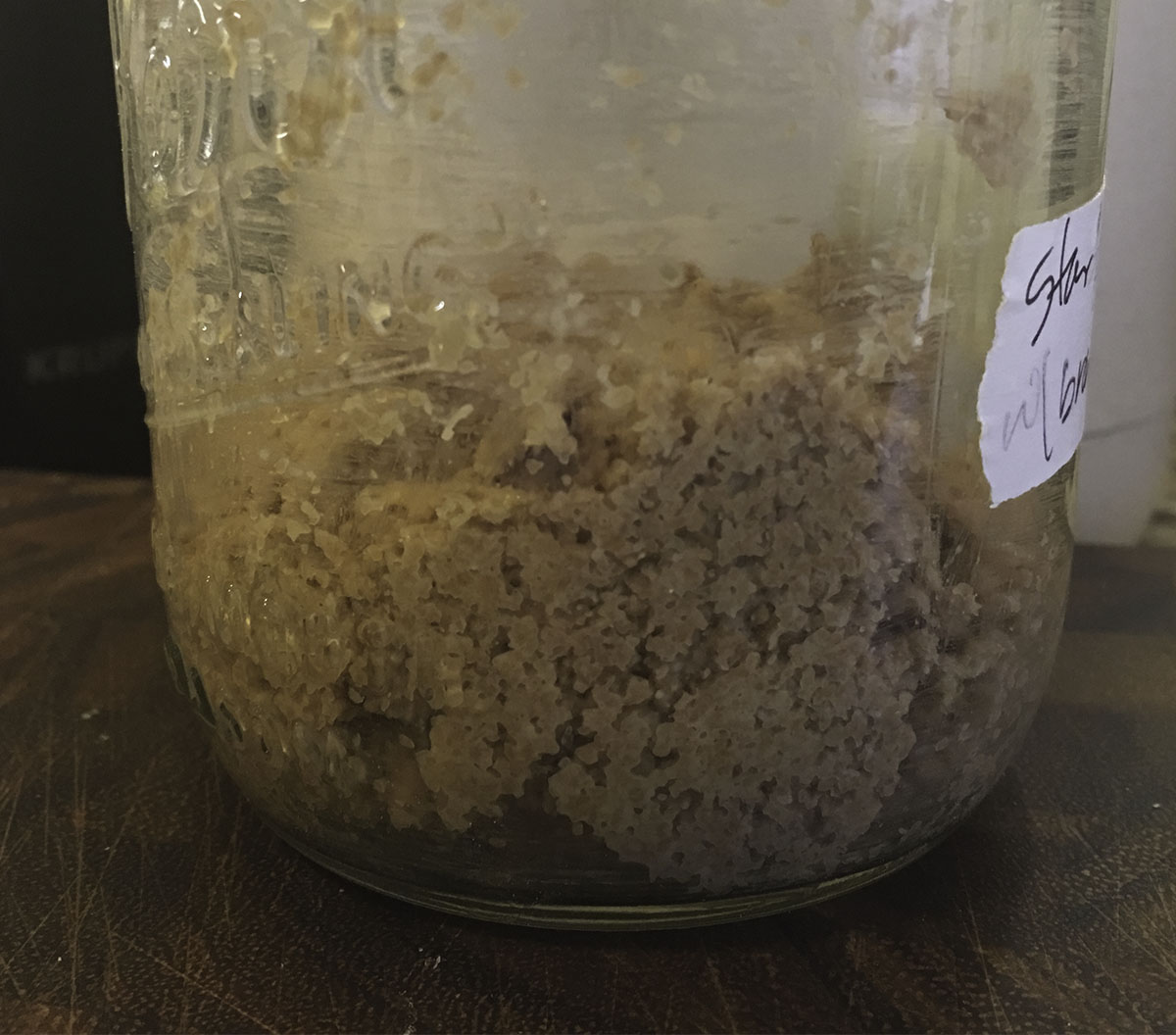You know how bread (or specifically, naan) is perfect for soaking up every last drip of curry? And how addictive paneer curry dishes are? Palak paneer, methi malai paneer, paneer butter masala and achari paneer, to name but a few. Curry bread is definitely not a new idea. See the popular Japanese fried curry bread (Kare-Pan) for evidence. Here, I combined Indian curry spices, Thai strong-flavoured condiments and Western cheese in this bread, a surefire way to wake one’s dimmed summer appetite.
Indian-Thai-Inspired Cheese Curry Sourdough
Dough flour (all freshly milled):
150g 50% Whole spelt flour
90g 30% Spouted spelt flour
60g 20% Pearl barley flour
For leaven:
10g 3.3% Starter
40g 13.3% Bran sifted out from dough flour
40g 13.3% Water
For dough:
264g 88% Dough flour excluding bran for leaven
173g 57.7% Water
57g 19% Whey
90g 30% Leaven
9g 3% Vital wheat gluten
5g 1.7% Salt
-g -% Curry spice mix (1/8 tsp each of coriander, cumin, turmeric and black pepper, and a pinch each of nutmeg and cinnamon)
Add-ins:
60g 20% Gloucester cheese, cubed (or sub a strong Cheddar)
1.5g 0.5% Dried fried shallots
1.5g 0.5% Dried fried baby shrimps
3g 1% Fresh cilantro leaves, roughly chopped
___________
245g 80.3% Whole grain
275g 90.2% Total hydration
Sift out the coarse bran from the dough flour, reserve 40g for leaven. Soak the rest, if any, in equal amount of whey taken from dough ingredients.
Combine all leaven ingredients and let sit until doubled, around 5 hours.
Soak the dried shallots and shrimps in a little hot water to rehydrate. Set aside until needed.
Roughly combine all dough ingredients except for the salt, leaven and soaked bran, autolyse for 15 minutes. Knead in the reserved ingredients and ferment for 15 minutes. Fold in the add-ins then ferment for 2 hours longer.
Preshape the dough then let it rest for 15 minutes. Shape the dough and put in into a banneton. Retard for 9 hours after proofing at room temperature for 20 minutes.
Let the dough warm up at room temperature for an hour. Preheat the oven at 230°C/446°F.
Score the dough and bake at 230°C/446°F with steam for 15 minutes then without steam for 25 minutes more or until the internal temperature reaches a minimum of 208°F. Let cool for at least 2 hours before slicing.

The crust of this bread is extra crispy as the fats of the cheese fried the dough surface. It is contrasted by the moist crumb and gooey cheese. I love the spiciness of this bread but feel free to tone it down by reducing the spices used.
________
To be honest, I have never been much of a fan of beetroot. The only way it tastes good to me is when roasted to slightly caramelized on the edges. This bread was a request from a friend who kindly gave me some high quality beetroot powder.

Beetroot Hazelnut Sourdough with 20% Rye
Dough flour:
240g 80% Freshly milled whole white wheat flour
60g 20% Whole rye flour
For leaven:
8g 4.7% Starter
36g 11% Bran sifted out from dough flour
36g 11% Water
For dough:
264g 88% Dough flour excluding bran for leaven
211g 70.3% Water
62g 20.7% Whey
80g 26.7% Leaven
9g 3% Vital wheat gluten
5g 1.7% Salt
15g 5% Beetroot powder
Add-ins:
30g 10% Toasted hazelnuts
___________
304g 100% Whole grain
313g 103.0% Total hydration
Sift out the coarse bran from the dough flour, reserve 36g for leaven. Soak the rest in equal amount of whey taken from dough ingredients.
Combine all leaven ingredients and let sit until doubled, around 4 hours.
Roughly combine all dough ingredients except for the salt, leaven and soaked bran, autolyse for 15 minutes. Knead in the reserved ingredients and ferment for 30 minutes. Fold in the add-ins then ferment for 4 hours longer. I used cold water this time to prevent over-proofing.
Preshape the dough then let it rest for 15 minutes. Shape the dough and put in into a banneton. Retard for 10 hours.
Preheat the oven at 230°C/446°F. Remove the dough from the fridge to warm up at room temperature for 20 minutes.
Score the dough and bake at 230°C/446°F with steam for 15 minutes then without steam for 25 minutes more or until the internal temperature reaches a minimum of 208°F. Let cool for at least 2 hours before slicing.

I’m aware that adding ascorbic acids to dough can preserve the bright red colour of beetroot. However, red is an eldritch colour for bread crumb to me…Brown bread beats red bread anytime of the day :) Despite the absence of red crumb, I can taste the presence of beetroot. This bread is not noticeably sour even though the leaven was on the mature side and rye flour was included. I attribute this to the addition of beetroot, which its sweetness masks the sourness.

______

Fish tacos with homemade corn tortillas (100% masa harina at 160% hydration)

Stir fried rice noodles





